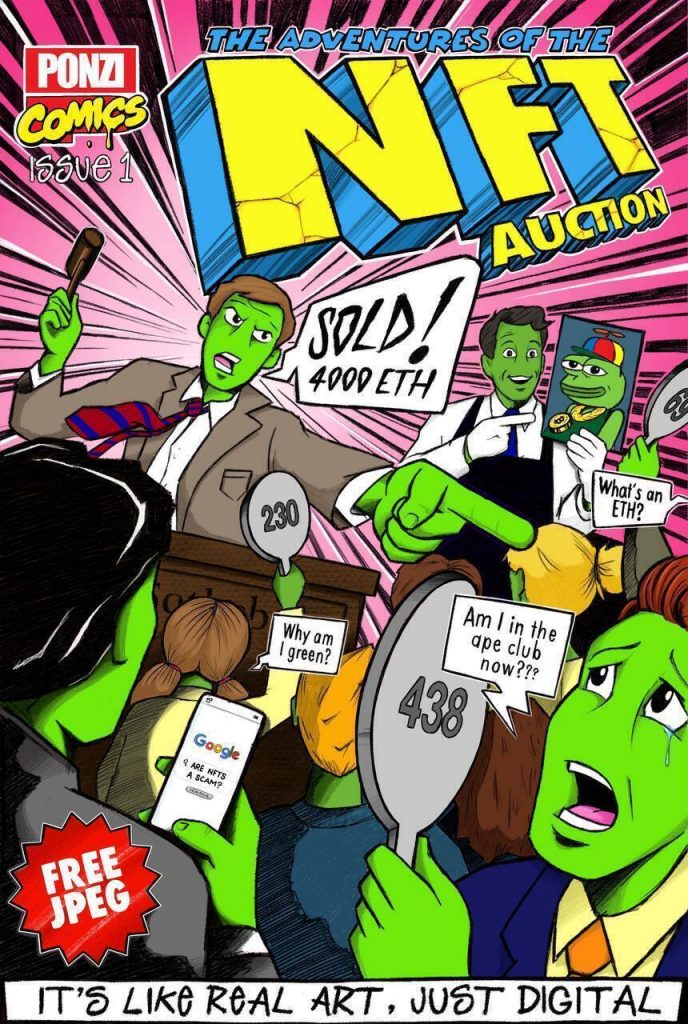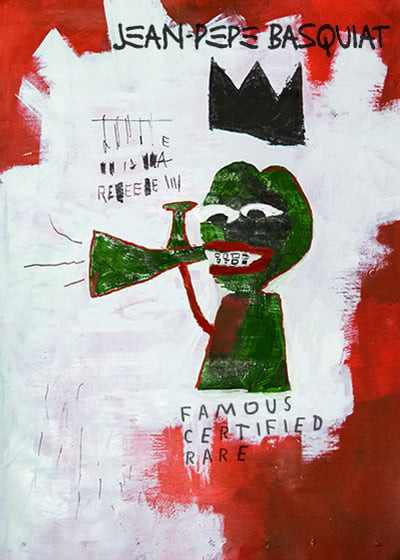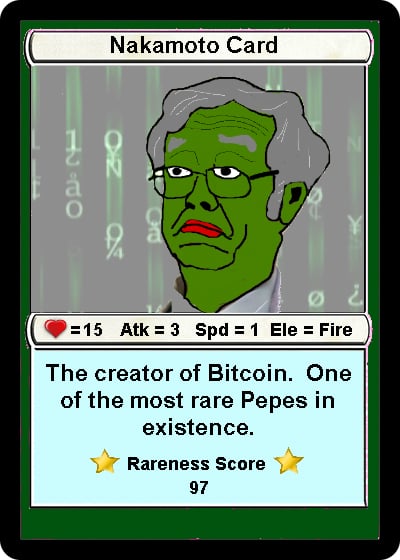Artnet NFT
‘This is a Project Driven by Artistry’: Johannes Vogt of Artnet Auctions on the Market History of Rare Pepe NFTs
Artnet's current NFT auction, "Feels Rare Man," centers on the iconic Rare Pepe project.

Artnet's current NFT auction, "Feels Rare Man," centers on the iconic Rare Pepe project.

Artnet NFT

The Rare Pepe project, a series of illustrations of the internet-famous Pepe the Frog character, made a splash long before NFTs became a global phenomenon.
In October 2016, memes made their way to the blockchain through a platform called Counterparty. The move was revolutionary: More than 300 artists from around the world created their own digital artworks. In 2021, some of Rare Pepes’ founding members infused the project with new life, producing more than 250 digital works, many of which are animated and include original soundtracks. Thus, a new series, Fake Rares, was born.
To celebrate the innovative spirit of the Rare and Fake Pepe movements, Artnet Auctions is proud to host an on-chain sale of the NFTs. Additionally, as a token of appreciation to all participating bidders, Artnet will airdrop a newly released NFT, REALFAKEART, by artist Viva La Vanda. This work is in the Fake Rares directory; it cannot be purchased and is only distributed via this auction.
On the occasion of “ArtNFT: Feels Rare Man,” we sat down with Johannes Vogt, head of NFT and digital art sales at Artnet Auctions, to discuss the genesis of Rare Pepes, his first foray into NFTs, and the ways that this auction reflects Artnet’s innovative ethos.
When did you first learn about Rare Pepe NFTs?
I first learned of Rare Pepes in a conversation with the collector TokenAngels. He got into the project fairly early and is the holder of the Pepe “grail” HOMERPEPE. He motivated me to create a Counterparty wallet and ended up gifting me my first Pepe!
Who created the first Rare Pepe? How did the phenomenon grow from there?
The “Series 1, Card 1” Rare Pepe is featured in our sale under the title RAREPEPE. It shows the infamous creator of Bitcoin, Satoshi Nakamoto.
For those who aren’t familiar, what is Counterparty? Why is it significant that Rare Pepes got their start on that platform?
Counterparty evolved from Bitcoin as a subchain that allowed for artwork assets to be traded. To this day it offers functionality that is somewhat superior to most other chains (as is exemplified by a new work by Dim Zayan in our current auction) and equally provides a sentiment of nostalgia since it emerged before the Ethereum blockchain and the NFT hype at large.

How can users collect these Rare Pepes and Fake Rares if they are not familiar with Counterparty?
It’s a wild journey. Buying assets on Counterparty can cause you some serious anxiety. You have to go via a so-called dispenser that’s often described as a vending machine. The scary part is that the vending machine will take your change even when it’s empty. Much better to buy at Artnet!
Trading Rare Pepes began as a game among collectors—like virtual trading cards. How does this gamification impact the current market for Pepes?
I think it’s important to point out that Pepes themselves are not part of a game, as the Spells of Genesis cards are for example. Rather, the game in and of itself was and is about collecting and trading. The visual appeal of a card, such as a baseball card, is apparent and intentional.
Does this gamification vary from other NFT projects?
Phew… I would say yes, substantially. Counterparty assets are all about hidden functionality and the surprise factor, something that has been adopted later on by Ethereum-based projects. The singularity of so-called sub-assets on Counterparty, however, is unparalleled to my knowledge.
How can people bid on the Rare Pepes and Fake Rares in Artnet’s auction?
Just hit the bid button. Plain and simple. It will require a Metamask wallet and ETH currency.
What first intrigued you about NFTs? What was your experience like when you tried to buy NFTs?
I’ve been a fan of digital art ever since I got excited about contemporary art in the early 2000s. My “aha” moment was when I realized that NFTs were not actually a new art form but rather a new way of authenticating and proving ownership of any digital asset, including digital artworks. It’s revolutionary!
What differentiates Rare Pepes from Fake Rares?
A good and crucial question for this sale. Rare Pepes as a project concluded in early 2018. The official Rare Pepe directory is closed, no further cards can be added to it. Fake Rares started out as a break-out project from the Rare Pepe Telegram channel and soon after found broad appreciation by the Pepe community at large.
Everyone was excited to see Pepes live on. The most striking proof of that can be found in “Series 0” of the Fake Rares. All cards from that series were actually created before Fake Rares were established. The artworks were either rejected or not submitted to the Rare Pepe curatorial committee, who are referred to as the “scientists” within the community. It is telling that the initial releases of Fake Rares were actually meant to be Rare Pepes.
Each of the works in Feels Rare Man holds a significant backstory in the Rare Pepe community—can you speak to this?
That would fill an evening of conversation and at least one bottle of red wine.

Mike, RARE PEPE (Series 1, Card 1, Issuance 300) (2016). Included in bundle lot Rare Pepe Series 1 (Golden Grail Collection). Available now in “ArtNFT: Feels Rare Man.”
This sale includes never-before-seen Fake Rares. What is the process like for creating a Fake Rare? How does it get listed in the Fake Rare Directory?
The Fake Rare Directory is guarded by La Faka Nostra, an undisclosed group of individuals—a mystery if you will—that determines the composition of each series that is being released.
Who are some key figures and artists to watch in this space?
Scrilla, Indelible, Robness, Pepenardo, Dim Zayan, and of course mera.ki, who dropped her most recent work in our sale and sold out in a heartbeat.
How do the Rare Pepe and Fake Rare projects align with Artnet’s ethos and position at the forefront of the online art market?
My interest really spiked because this is a project driven by artistry. Imagine it as an open call to all artists around the world to create a work that somehow features the Pepe meme in any kind of way. It’s both limiting and endlessly inspiring. Every card is a unique artwork that really sets the Pepe works apart from the 10,000 projects that have become so fashionable and are generated by software. Not to discredit that value in that but the message is very different. I do consider the Pepe message very much in line with Artnet’s core trajectory: the art world online.